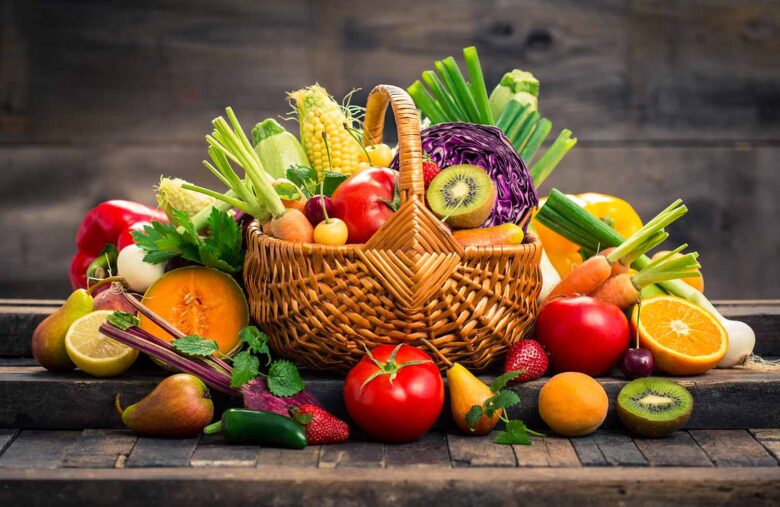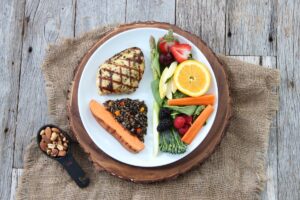Fruits and vegetables are essential for both physical and mental health. They are naturally rich in vitamins, minerals, and dietary fiber, which promote digestion and boost immunity. Many people know they should eat more fruits and vegetables but find it difficult to incorporate them into their daily diet. This can be challenging due to busy schedules, limited cooking skills, or poor eating habits. However, there are many simple ways to add more fruits and vegetables to your diet without making major changes. Simple dietary changes can increase your energy, improve your skin, and enhance your overall health.
Fruits and Vegetables for Breakfast
Breakfast is a perfect time to add fruits and vegetables. Anyone can make small changes, such as adding a banana or apple to their cereal, spinach to their smoothie, or avocado to their toast. These improvements require only subtle adjustments to your existing eating habits. A few servings of fruits and vegetables at breakfast can set the tone for healthy eating throughout the day. Breakfast becomes filling, colorful, and nutritious without any effort.
Get Creative with Vegetables at Lunch
Even if you prefer quick and easy meals, lunch is a great opportunity to add vegetables. Sandwiches can be filled with lettuce, cucumber, or tomato slices, and salads can be enriched with roasted vegetables, fruit, or seeds. Sliced carrots, spinach, or peas can make soups more nutritious and satisfying. Even carrot sticks, celery, or cherry tomatoes can make a delicious snack for busy eaters. Your favorite dishes deserve healthy, delicious ingredients.
Easy Vegetable Dinner
Dinner is often the most nutritious meal, but it’s also the easiest to add vegetables to. Let vegetables shine instead of just serving them as a side dish. Add mushrooms, bell peppers, and zucchini to pasta or broccoli and spinach to rice. Stir-fried rice or noodles with a variety of vegetables is another easy option. If you prefer meat, grill vegetables with chicken, fish, or beef. The mix of flavors makes the dish more balanced and filling.
The Magic of Fruit Snacks
While snacks are often considered a sinful indulgence, they can be healthier. FInstead of reaching for crackers or chips, opt for fresh apples, grapes, or berries to satisfy your sweet taste.Combining fruit with yogurt or nut butter makes a healthy and filling snack. Slice cucumbers, carrots, and bell peppers and serve them with hummus or a light sauce for a delicious snack. These daily choices can increase your fruit and vegetable intake and reduce your processed food intake.
Fruit and Vegetable Smoothies
Smoothies are an eeffortlessand fun way to get more fruits and vegetables in your diet. With a blender, you can make smoothies with bananas, berries, spinach, or kale. Add a little yogurt or milk for a smooth texture and honey for flavor. Smoothies are perfect for people who don’t like raw vegetables. Blending them into a drink makes it more fun to get nutrients. They make a delicious breakfast or snack.
Displaying Fruit and Vegetables at Home
Prominently displaying fruits and vegetables can encourage you to eat more. Fruits and vegetables are easier to eat on a plate on the table or in transparent coolers. However, the sight of processed foods can make it difficult to make healthy choices. PWhen hunger strikes, it’s easier to access prepared vegetables.This simple preparation saves time and promotes a healthy diet.
Cooking and Baking with Fruit and Vegetables
Adding more fruits and vegetables to your dishes is easy. Adding chopped zucchini or carrots to muffins or pancakes increases the nutritional value without compromising the texture. Apples, bananas, and berries add a natural sweetness to baked goods. Vegetables can be incorporated into sauces, stews, and casseroles in everyday cooking without becoming the main ingredient. TThis techniqueoffers benefits for picky eaters and children who don’t like vegetables, without them even realizing it.
Fruits and Vegetables Make Dining out Healthier
WEating out can make it harder to stick to your meal plan, but you can still eat more fruits and veggies.Simple ways include ordering a salad, ordering more vegetables, or substituting fruit for dessert. Many restaurants are increasingly focusing on health and offering vegetable dishes. With a little knowledge, you can make smarter choices when dining out.
Building Long-Term Habits with Small Changes
Adding fruits and vegetables doesn’t have to be a radical step. Instead, gradually integrate them into your daily routine. Over time, these choices will become second nature, and your meals will become more colorful and healthy. By making it a lasting habit, you’ll more easily experience better health, more energy, and a lower risk of chronic disease. Everyone can enjoy adding fruits and vegetables to their diet; it just requires patience and imagination.
Conclusion
A balanced diet requires fruits and vegetables, but getting enough isn’t difficult. Simple changes to breakfast, lunch, dinner, and snacks can increase your intake without sacrificing flavor or convenience. Smoothies, simple cooking, and mindful dining out all contribute to a balanced diet. Consistency and long-term habits are crucial. Over time, your health, energy, and well-being will improve.
FAQs
1. Why are fruits and vegetables important?
They are rich in vitamins, minerals, and dietary fiber, which can improve immunity, digestion, and overall health.
2. How many servings should you eat daily?
Most health experts recommend five servings of fruits and vegetables per day, but more is always better.
3. What if I don’t like vegetables?
Smoothies, soups, and baked goods contain hidden vegetables, making them easier to eat.
4. What are the nutritional benefits of frozen fruits and vegetables?
Yes, frozen products are often just as nutritious as fresh produce and can help you eat more all year round.
5. Is moderation really important?
Absolutely. Eating an extra serving of fruit or vegetables per day can improve your long-term health.




